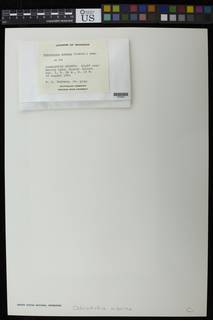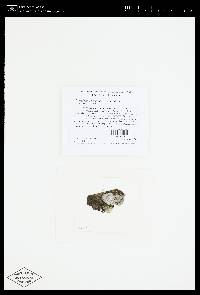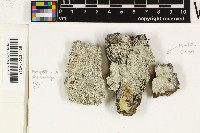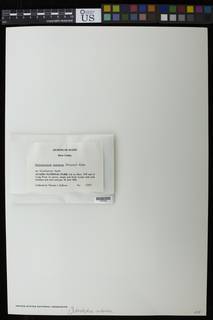
Consortium of Lichen Herbaria
- building a Global Consortium of Bryophytes and Lichens as keystones of cryptobiotic communities -
- Home
- Search
- Images
- Species Checklists
- US States: O-Z >
- US National Parks
- Central America
- South America
- US National Parks
- Southern Subpolar Region
|
|
|
|
Family: Ochrolechiaceae
[Ochrolechia arborea var. arborea (Kreyer) Almb., morePertusaria arborea (Kreyer) Zahlbr., Pertusaria arborea f. albula (Savicz) Erichsen, Pertusaria arborea f. arborea (Kreyer) Zahlbr., Pertusaria arborea var. albula (Savicz) Kreyer, Pertusaria arborea var. arborea (Kreyer) Zahlbr., Pertusaria arborea var. parvipuncta Erichsen, Variolaria arborea (Kreyer) Ljub., Variolaria arborea var. albula Savicz, Variolaria arborea var. arborea (Kreyer) Ljub., Variolaria lactea var. arborea Kreyer] |
Nash, T.H., Ryan, B.D., Gries, C., Bungartz, F., (eds.) 2004. Lichen Flora of the Greater Sonoran Desert Region. Vol 2. Thallus: crustose, +orbicular, very thin at the young edges to somewhat thicker in the older central areas, rarely verruculose to verrucose areoles: small, orbicular, delimited surface: yellowish gray or rarely yellowish white, rugose in older areas, bursting into abundant soralia soredia: typically greenish to pale yellow-green, more rarely yellowish white or even discolored to a pale orange, usually coarsely granular, especially fresh, but can erode to a more farinose appearance soralia: pale, distinctly greenish in fresh material, small, at first and sometimes remaining discrete and round with 0.5-1.5 mm in diam., but most becoming confluent, K-, C+ red, KC+ red, P- Apothecia and Pycnidia: not seen Spot tests: thallus cortex K-, C+ red, KC+ red, P-, UV- or pale yellow; medulla usually too thin but C+ pink when tested, UV+ brilliant to vivid yellow-orange Secondary metabolites: lichexanthone, gyrophoric acid, and lecanoric acid (trace). Substrate and ecology: bark and wood of various kinds, including various species of Acer, Alnus, Betula, Populus, Prunus, Quercus, Vaccinium, Abies, Picea, Pinus and Thuja, in a variety of well-lighted forest types, including mixed-hardwood, pine and spruce stands, and on isolated trees in fields or on roadsides World distribution: mainly in eastern North America, including the Great Lakes region and scattered along the west coast Sonoran distribution: southern California and Baja California (Guadalupe Island). Notes: The distinction between O. arborea and O. androgyna is discussed under the latter species. Unlike O. africana and O. mexicana, the only other North American species having abundant lichexanthone in the thallus and therefore clearly UV+ yellow cortices, O. arborea is brightly UV+ in the soralia alone, or sometimes faintly in other parts of the thallus as well. |
Powered by Symbiota







































































































